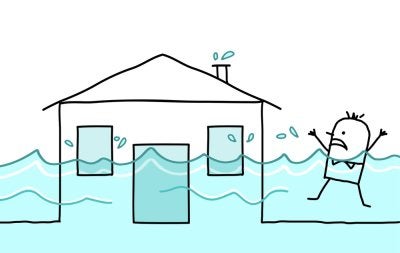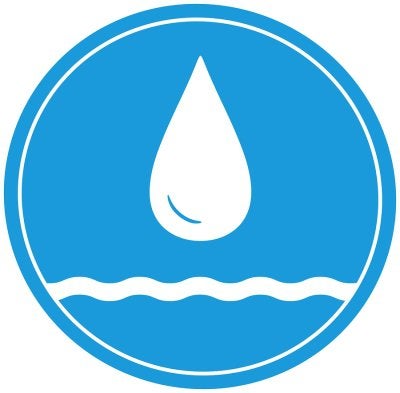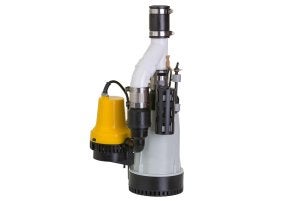-
Factors that Increase Your Risk of Basement Water Damage
The winter season has arrived in Baltimore, and it is important to make sure that your home is protected from water damage. A flooded basement can result in significant damage to your home, ranging from moisture issues to mold growth and more. With the help of a company offering basement waterproofing serving Baltimore , you can rest assured that you will not be in need of mold remediation or other emergency waterproofing basement procedures. To help you determine whether your home is in need of basement waterproofing, here is an overview of some of the factors that may increase your risk of water damage in your basement.

Extreme Weather Conditions
Oftentimes, basement flooding is caused by extreme weather conditions. For example, when your area is subjected to a heavy rainstorm, rainwater could begin pooling around your foundation. If your foundation has not been properly sealed, this water could begin to leak into your basement. To protect your home against rain related water damage, it is a good idea to schedule basement waterproofing services before the start of the storm season.
Improper Property Grade
The grade of your property is a term that describes the overall slope of your yard and foundation. Ideally, your property grade should slope evenly away from your foundation and basement. In the event that your grade slopes towards your foundation, you may find that your basement experiences flooding after a rainstorm. Water pooling around your foundation is a top sign that you may have property grade issues.
Sewer Backups
A sewer backup is a home emergency that can cause significant flooding to your basement. When your sewer backs up, wastewater could begin to enter your basement’s indoor spaces. To prevent a sewer backup from damaging your home, it is a good idea to schedule regular plumbing services. Your plumber can identify whether your sewer line is at risk of clogging or breaking. By keeping track of the main causes of basement flooding, you can avoid a water damage emergency this winter.
-
Answering Common Questions About Crawl Space Moisture
While your crawl space may not concern you on a day-to-day basis, it is important to be on the lookout for the signs of crawl space moisture. By scheduling crawlspace waterproofing in Baltimore, you can prevent moisture from damaging your foundation, basement, and other areas of your home. Some of the common crawlspace waterproofing techniques are crawl space encapsulation and the installation of a crawl space dehumidifier. Read on for answers to some of the most common questions about crawl space moisture.

What Causes Crawl Space Moisture?
When you are dealing with crawl space moisture issues , you may be wondering what has caused your water problem in the first place. There are two common culprits of crawl space moisture. Sometimes, wetness in a crawl space can be caused by flooding rainwater. Additionally, crawl space moisture can also be related to plumbing issues throughout the home. Your crawl space waterproofing technician will be able to pinpoint the cause of your moisture problem.
Why Is Crawl Space Moisture a Concern?
Since the crawl space is one of the least accessible parts of a home, it may not be clear as to why it is important to waterproof this area. In fact, moisture in a crawl space can lead to structural problems in your home’s foundation and other critical areas. Additionally, a damp crawl space can also lead to a mold infestation throughout your home. When you suspect that your crawl space may have excess moisture, you should not hesitate to address the issue.
How Can Crawl Space Moisture Be Repaired?
There are several different methods that can be used to repair moisture in a crawl space. First, your technician will need to gain access to the crawlspace vapor barrier. Once the vapor barrier has been removed, a sump pump will be used to remove any excess water from the crawl space. Once the crawl space has been completely dried, the vapor barrier will be reinstalled.
-
Sump Pumps 101
 The sump pump is one of the most important pieces of equipment for preventing severe water damage to a property. The sump pump is a small pump installed in the low part of a basement or crawlspace. It collects water that flows into the sump pit, pumping it away from the building to keep the building dry and prevent flooding. To learn more about sump pumps near Baltimore , read on. And for quality sump pump repair, replacement, or installation, contact Storm Waterproofing.
The sump pump is one of the most important pieces of equipment for preventing severe water damage to a property. The sump pump is a small pump installed in the low part of a basement or crawlspace. It collects water that flows into the sump pit, pumping it away from the building to keep the building dry and prevent flooding. To learn more about sump pumps near Baltimore , read on. And for quality sump pump repair, replacement, or installation, contact Storm Waterproofing.Flooded Basements
The American Society of Home Inspectors found that more than 60 percent of homes in the United States experience below-ground wetness. Knowing this, it’s not surprising that most homeowners have to deal with water in the basement at some point. Unfortunately, water can cause extensive property damage, and may require home mold remediation.
How a Sump Pump Works
A sump pump is placed in the sump pit, a hole located in the lowest part of the basement or crawlspace that is approximately two feet deep. When water starts to fill the pit, a pressure sensor turns the pump on. This pulls the water out of the sump pit and relocates it to a drain spot away from the foundation. The pipe is oftentimes equipped with a check valve that keeps water from flowing back into the sump pit. Most sump pumps use a centrifugal pump to relocate water. The motor causes the impeller to turn, which pushes the water to the sides of the pipe and creates a low-pressure area in the center. Water from the sump pit is pulled to this area to fill the pressure void.
Sump Pump Design
There are two types of sump pumps. Submersible pumps sit in water, protected by waterproof housing. When the pump turns on, it sucks water through the gate and into the pipe, which routes it to an area outside of the home. Pedestal pumps, on the other hand, are located away from the water, even when the pit is full. These pumps are louder, but less expensive, than submersible pumps.
